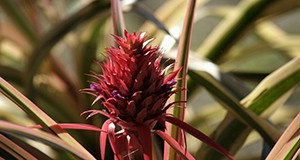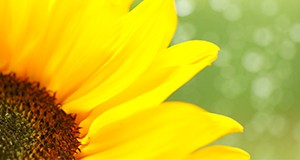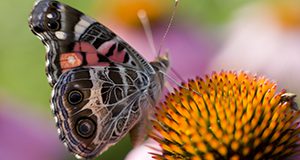The purpose of this report is to summarize ornamental plant producers' perceptions about neonicotinoid labeling and anticipated changes in production practices due to neonicotinoids labeling policy intervention. The target audience is industry, state agency, and public stakeholders involved in decisions and policy making related to the use of neonicotinoid insecticides in the U.S. ornamental plants industry.
https://edis.ifas.ufl.edu/fe1094
Tag: Nursery Business Management
Does Consumers' Awareness Impact Their Purchase Likelihood of Neonic-Free Plants?
Neonicotinoid (neonic) pesticides have been facing intense scrutiny because of their potential role in pollinator insect population declines. Research has shown that insecticide use in general has resulted in $284 million per year in damages to honeybee and pollinator services in the United States. This is especially worrying because food supply would fail to meet increasing global food demand without pollinator insects.
Consumer awareness of neonic pesticides increases the purchase likelihood for plants that are labeled “neonic-free,” and, as consumer awareness of neonics increases, demand for plants may decrease if there is limited availability of neonic-free options. This 5-page fact sheet written by Hayk Khachatryan and Alicia Rihn and published by the Food and Resource Economics Department explains the practical implications for growers, retailers, and policy makers and describes how these stakeholders can benefit from increased awareness of this important new market niche.
edis.ifas.ufl.edu/fe1008
Are Consumers Interested in Ornamental Plants That Benefit Pollinator Insects?
Population declines among bees, butterflies, and other pollinator insects are very worrying because 70% of the world’s food crop production depends upon these tiny insect workers. Fortunately, ninety million US households have yards, landscapes, or gardens that can enhance pollinator habitat and health. Consumers’ actions can drastically impact pollinator insects and even help them to recover. This 5-page fact sheet written by Hayk Khachatryan and Alicia Rihn and published by the UF Department of Food and Resource Economics, October 2016, describes a new UF/IFAS study of consumers’ actions and perceptions as they considered ornamental plants that benefit pollinators. It covers consumers’ current actions to aid pollinators, their interest in purchasing plants to help pollinators, and their perceptions about plant availability, and it describes strategies for merchants and producers to cater to consumer preferences for in-store communications/promotions and help them to find and purchase plants that aid pollinator insects.
http://edis.ifas.ufl.edu/fe997
Florida Consumer Preferences for Ornamental Landscape Plants
Certain attributes of ornamental landscape plants make them more attractive to consumers. This 5-page fact sheet written by Hayk Khachatryan and Alicia Rihn and published by the UF Department of Food and Resource Economics, October 2016, assesses the impacts of price, plant type, pollinator friendliness, production methods, and origin attributes on consumers’ purchasing likelihood for ornamental landscape plants. Recommendations for green industry stakeholders are also provided.
http://edis.ifas.ufl.edu/fe1000
Consumers' Response to "Neonic-Free" and Other Insect Pollinator Promotions on Ornamental Plants
Pollinator insects are essential to world food crop production, the economy, and the environment. Neonicotinoid (neonic) insecticides are facing intense backlash from environmental groups because the systemic protection they provide throughout the plant, including the pollen and nectar, may be injuring pollinator insects and causing their population decline. But many nursery and greenhouse growers use neonic-based pesticide control measures because they are effective, inexpensive, and cause less environmental damage than other insecticides. The increased publicity may influence consumer demand and preferences but very few studies have investigated consumer responses to neonic-free labels, and evidence suggests that many consumers have little knowledge or awareness of the issue. This 3-page fact sheet describes the results of a the study investigating how consumers’ awareness of neonic insecticides influenced their preferences and purchasing behavior for plants and exploring the marketing potential of using alternate pollinator promotions (besides neonic-free) in garden center retail outlets. Written by Hayk Khachatryan and published by the Food and Resource Economics Department.
http://edis.ifas.ufl.edu/fe991
Consumer Perceptions of Lawn Fertilizer Brands
Widespread urbanization in the United States has increased the number of lawns. A healthy lawn provides many benefits, including urban heat dissipation, water quality protection, erosion control, carbon sequestration, community safety, aesthetics, and property value growth. Many homeowners maintain their healthy lawns by applying fertilizers throughout the growing season, but excess fertilizer runoff and leaching have received much attention recently because of waterway pollution and algae blooms, leading many states to place restrictions on what chemicals can be used in lawn fertilizers.
Consumers’ increased environmental awareness creates a niche opportunity for the fertilizer industry to promote environmentally friendly lawn fertilizers, but in order to effectively exploit it, industry stakeholders must understand consumer purchasing behavior before expending labor, time, and money creating products for sale. The following 3-page report written by Hayk Khachatryan, Alicia Rihn, and Michael Dukes and published by the Food and Resource Economics Department covers research methodology and the existing brand awareness and selection of consumers in the lawn fertilizer industry. It also discusses homeowners’ preferences for certain fertilizer attributes. Consumer awareness, selection, and attribute preferences indicate existing behavior, and understanding existing behavior assists in the development of effective marketing programs, promotional strategies, and policies.
http://edis.ifas.ufl.edu/fe990
Florida Consumer Preferences for Fruit-Producing Plant Attributes

This 4-page report from the Food and Resource Economics Department and the UF/IFAS Mid-Florida Research and Education Center compares the effects of plant type, price, production method, and origin attributes on consumer preferences for fruit-producing plants. Authors Hayk Khachatryan and Alicia Rihn present the results of a survey of Florida plant consumers conducted in June and July of 2014 to rate their likelihood of purchasing plants with various attributes, reporting that production methods do indeed directly influence consumers’ preferences for fruit-producing plants. The article describes the implications for the environmental horticulture industry and provides suggestions for growers and retailers to more effectively market their plants.
http://edis.ifas.ufl.edu/fe981
Florida Consumer Perception of the Fresh from Florida Campaign on Horticulture Plants

Consumer demand for local products is increasing all the time because of perceptions of superior quality and the idea that local products benefit personal health, the local community, and the environment. Many states have publicly funded marketing programs to promote the consumption of local products. In a new development in Florida, the Department of Agriculture and Consumer Services (FDACS) has partnered with the Florida Nursery, Growers, and Landscape Association to include horticulture plants in the state’s Fresh from Florida campaign for the first time. This 3-page report written by Hayk Khachatryan and Alicia Rihn and published by the Food and Resource Economics Department provides an overview of Florida consumer perceptions of the new Fresh from Florida campaign for horticultural plants. Growers, wholesalers, marketers, and retailers can use the tips inside to understand consumer perceptions and discover how best to use the promotional materials of the new program to reach consumers, reduce economic risks and improve their returns on investment.
http://edis.ifas.ufl.edu/fe976
Nursery Crop Selection and Market Niches (ENH1194/EP455)
 The ultimate success of an ornamental production operation hinges on the ability of that operation to successfully understand which genera, species, and/or cultivars to grow on a year-to-year basis. This 5-page fact sheet describes several important factors that must be considered in order to properly assess which ornamental crops should be grown and which market niches exist that may dictate crop selection. Written by Gary Knox and Matthew Chappell and published by the UF Department of Environmental Horticulture, October 2011. UF/IFAS Photo by Josh Wickham.
The ultimate success of an ornamental production operation hinges on the ability of that operation to successfully understand which genera, species, and/or cultivars to grow on a year-to-year basis. This 5-page fact sheet describes several important factors that must be considered in order to properly assess which ornamental crops should be grown and which market niches exist that may dictate crop selection. Written by Gary Knox and Matthew Chappell and published by the UF Department of Environmental Horticulture, October 2011. UF/IFAS Photo by Josh Wickham.
http://edis.ifas.ufl.edu/ep455



